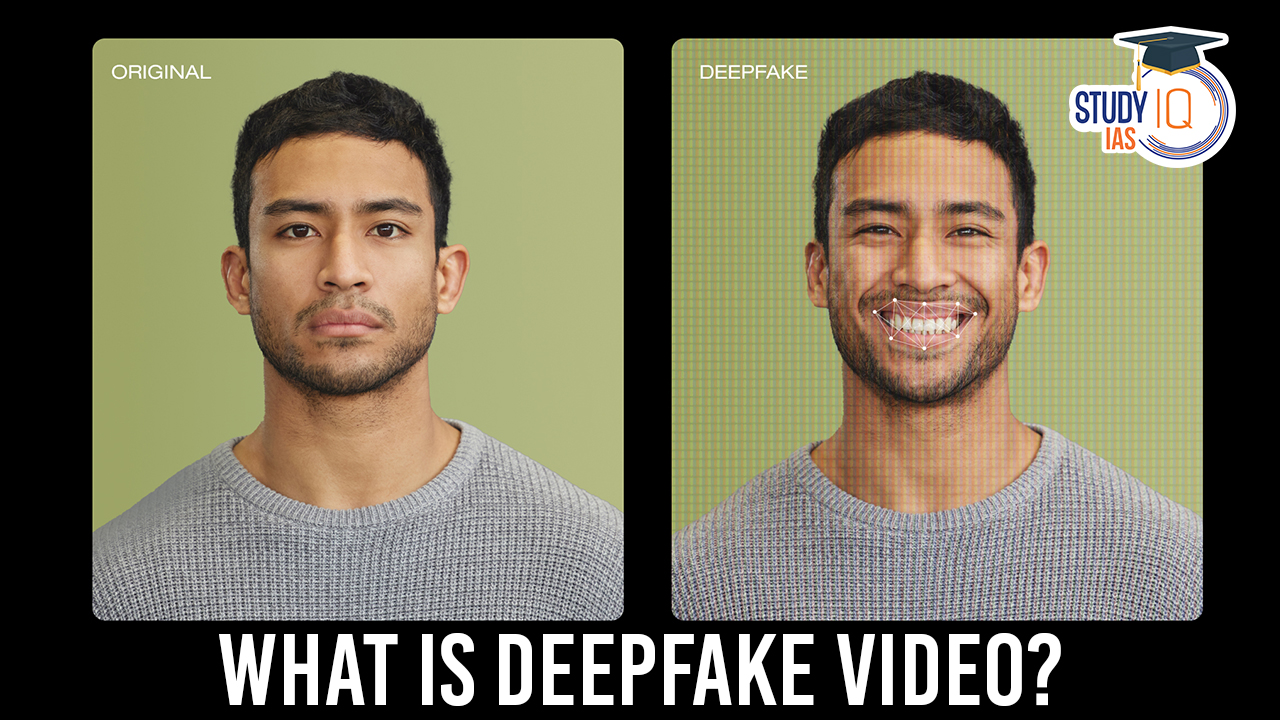Table of Contents
Deepfake Video Controversy: A deepfake video featuring South Indian actress Rashmika Mandanna has taken social media by storm, prompting widespread outrage and calls for stringent legal measures against the creators.
What is Deepfake Video?
A deepfake video is a type of synthetic media in which a person in an existing image or video is replaced with someone else’s likeness. This is typically done using artificial intelligence (AI) and machine learning techniques. Deepfake videos can be used for a variety of purposes, including entertainment, education, and misinformation.
We’re now on WhatsApp. Click to Join
Deepfake Technology
Deepfake technology is a type of artificial intelligence (AI) that can be used to create realistic videos and audio recordings of people saying or doing things they never did. It works by using AI to analyze a large amount of data, such as photos and videos of a person, to create a realistic model of their appearance and voice. This model can then be used to generate new content that looks and sounds like the person, even if they were never involved in its creation.
Deepfake technology has the potential to be used for a variety of purposes, including entertainment, education, and activism. However, it can also be used for malicious purposes, such as spreading misinformation or creating fake news.
Deep Synthesis Technology
The use of technologies such as deep learning and augmented reality, to generate text, images, audio and video to create virtual scenes is called deep synthesis technology. Deepfakes is one of the most notorious applications of deep synthesis technology.
Benefits of Deepfake Technology
Here are some of the potential benefits of Deepfake Technology:
- Entertainment: Deepfake technology can be used to create realistic special effects in movies and TV shows. It can also be used to create personalized entertainment experiences, such as virtual reality simulations that allow users to interact with their favourite celebrities.
- Education: Deepfake technology can be used to create more engaging and interactive educational experiences. For example, it could be used to create simulations of historical events or to allow students to interact with virtual characters.
- Activism: Deepfake technology can be used to raise awareness of social issues. For example, it could be used to create videos that show the impact of climate change or to give a voice to marginalized groups.
Risk Associated with Deepfake Technology
However, there are also potential risks associated with Deepfake Technology:
- Misinformation: Deepfake technology can be used to spread false or misleading information. For example, it could be used to create videos that make it appear as if a politician is saying something they never said.
- Reputation damage: Deepfake technology can be used to damage someone’s reputation. For example, it could be used to create videos that make it appear as if a celebrity is doing something that they would never do.
- Identity theft: Deepfake technology could be used to steal someone’s identity. For example, it could be used to create a fake passport or driver’s license.
Are Deepfake Technology Illegal in India?
Deepfake technology is not explicitly illegal in India, but there are a number of existing laws that could be used to prosecute the creation or dissemination of deepfakes that are harmful or illegal. These laws include:
-
Section 66E of the Information Technology Act (2000): This section prohibits the publication or transmission of any material which contains the private parts of individuals without their consent. This could be used to prosecute the creation or dissemination of deepfakes that contain sexually explicit material.
-
Section 66D of the Information Technology Act (2000): This section prohibits the use of computer resources or communication devices to cheat or impersonate someone. This could be used to prosecute the creation or dissemination of deepfakes that are used to deceive or defraud others.
-
Section 420 of the Indian Penal Code (1860): This section prohibits cheating and dishonesty. This could be used to prosecute the creation or dissemination of deepfakes that are used to mislead or deceive others.
-
Section 500 of the Indian Penal Code (1860): This section prohibits defamation. This could be used to prosecute the creation or dissemination of deepfakes that are used to damage someone’s reputation.
-
Section 67A of the Information Technology Act (2000): This section prohibits the publication or transmission of information which is false and which may cause harm to any person the public or the nation. This could be used to prosecute the creation or dissemination of deepfakes that are used to spread misinformation or propaganda.
In addition to these existing laws, the Indian government is currently considering a number of new regulations that would specifically address the issue of deepfakes. These regulations could include:
-
The Personal Data Protection Bill (2022): This bill, if passed, would give individuals more control over their personal data and make it more difficult for companies to collect and use data without their consent. This could help to protect individuals from deepfakes that are created using their personal data.
-
The Artificial Intelligence (AI) Regulation Bill: This bill is currently in draft form and would establish a regulatory framework for AI in India. The bill could include specific provisions on deepfakes, such as requiring companies to label deepfakes as such or to take steps to prevent the creation and dissemination of harmful deepfakes.
The Indian government is also working on developing technology to detect deepfakes. This technology could be used to identify and remove deepfakes from the internet, or to warn users when they are viewing a deepfake.
Examples of How Deepfake Technology Used
Here are some examples of how Deepfake technology has been used:
- In 2017, a deepfake video was created that made it appear as if former US President Barack Obama was saying things he never said. The video was widely shared on social media, and it was initially believed to be real.
- In 2018, a deepfake video was created that made it appear as if actress Scarlett Johansson was promoting a cryptocurrency scam. The video was also widely shared on social media, and it caused some people to lose money.
- In 2019, a deepfake video was created that made it appear as if actress Daisy Ridley was endorsing a political candidate. The video was also widely shared on social media, and it led to some people being harassed.
Legal and Ethical Considerations for Use of Deepfake Videos and Images
The use of deepfake videos raises a number of legal and ethical considerations. For example, it is not clear whether deepfake videos constitute copyright infringement or defamation. Additionally, there are ethical concerns about the use of deepfake videos to deceive or manipulate people.
What is being done to address the concerns about deepfake videos?
There are a number of things that are being done to address the concerns about deepfake videos. These include:
- Developing technology to detect and remove deepfake videos. Several companies and academic institutions are working on developing algorithms that can identify deepfake videos.
- Raising awareness about the dangers of deepfake videos. There is a growing effort to educate the public about the potential dangers of deepfake videos.
- Developing legal and regulatory frameworks to address deepfake videos. There is a need for clear laws and regulations that govern the use of deepfake videos.
Recommendations
Here are some recommendations for how to stay safe from deepfake videos:
- Be critical of the information you see online. Don’t believe everything you see, especially if it seems too good to be true.
- Be aware of the potential for deepfake videos. Be skeptical of videos that seem to show someone saying or doing something that is out of character for them.
- Report deepfake videos that you see. If you see a deepfake video, report it to the platform where you saw it.
- Support organizations that are working to address the problem of deepfake videos. There are a number of organizations that are working to develop technology to detect and remove deepfake videos, as well as to raise awareness about the dangers of deepfake videos.
Deepfake technology is a powerful tool that has the potential to be used for both good and bad. It is important to be aware of the potential dangers of deepfake videos and to take steps to protect yourself from them.
Combating Deepfakes in Other Country
European Union
- The EU has updated its Code of Practice to prevent the spread of disinformation through deepfakes.
- Under the code, tech companies such as Google, Meta, and Twitter have to take measures to counter deepfakes and fake accounts on their platforms.
- Companies have six months to implement measures once they have signed up to the Code. If found non-compliant, companies may have to pay 6% of their annual global turnover as a fine.
- Signatories: Companies such as Facebook, Google, Twitter, Mozilla, Microsoft, TikTok etc have signed up.
The USA
- The US has introduced the bipartisan Deepfake Task Force Act to assist the Department of Homeland Security (DHS) to counter deepfake technology.
- The DHS has to conduct an annual study of deepfakes, assess the technology used, track its uses by foreign and domestic entities, and suggest countermeasures to tackle the same.
- States such as California and Texas have passed laws that criminalise the publishing and distributing of deepfake videos that intend to influence the outcome of an election.
- The law in Virginia imposes criminal penalties on the distribution of nonconsensual deepfake pornography.
China’s Policy to Curb Deepfakes
- The policy mandates deep synthesis service providers and users to ensure that any altered content using the technology is explicitly labelled and can be traced back to its source.
- People using the technology to edit someone’s image or voice have to notify and take the consent of the person in question.
- In the case of reposting news made using this technology, the source can only be a government-approved list of news outlets.
- Deep synthesis service providers have to follow local laws, respect ethics, and maintain the correct political direction and correct public opinion orientation.
- Need for such policy:
- Unchecked use of deep synthesis technology could lead to its use in criminal activities like online scams or defamation.
- The regulations aim to reduce risks that might arise from activities provided by platforms which use deep learning or virtual reality to alter any online content.


 Advanced Air Defence Radars: Types, Comp...
Advanced Air Defence Radars: Types, Comp...
 Ion Chromatography, Working and Applicat...
Ion Chromatography, Working and Applicat...
 Broadly Neutralising Antibodies (bNAbs):...
Broadly Neutralising Antibodies (bNAbs):...

























